




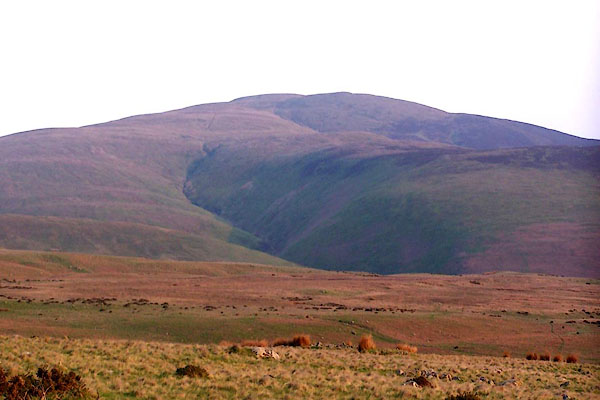
BMC35.jpg (taken 11.5.2006)

Click to enlarge
BWQ68.jpg From White Combe.
(taken 27.5.2012)
placename:- Black Combe
placename:-
item:- graphite; black lead
"on the Castle tower walking quite round by the battlements I saw ... into Cumberland to the great hill called Black Comb Hill whence they digg their black lead [graphite] and no where else, but they open the mine but once in severall yeares; ..."
placename:- Black Comb
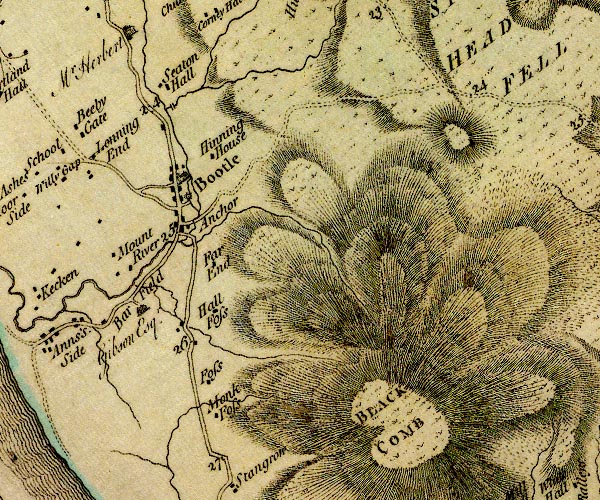
D4SD18NW.jpg
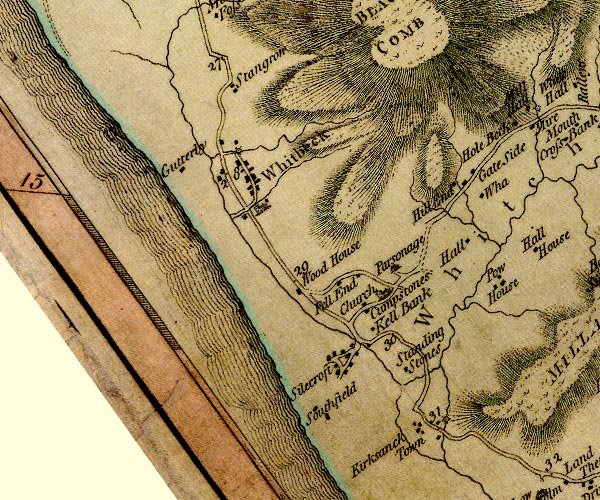
D4SD18SW.jpg
"BLACK COMB"
hill hachuring; a hill or mountain
item:- Carlisle Library : Map 2
Images © Carlisle Library
placename:- Black Comb Hill
 goto source
goto sourcePage 18:- "... ..."
"To sail into Piel-of-Foudray from the N.; take half-flood, and keep Black-comb Hill out by Walney (to avoid Helpsford Sand) ..."
placename:- Black Comb
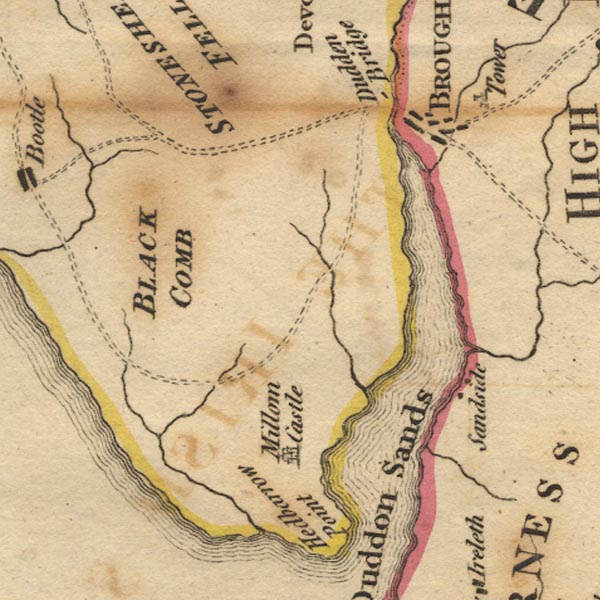
Ws02SD18.jpg
"BLACK COMB"
item:- Armitt Library : A1221.1
Image © see bottom of page
placename:- Black Comb Hill
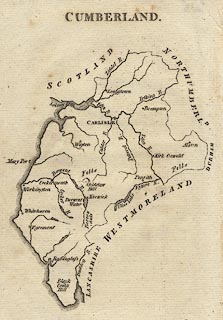 click to enlarge
click to enlargeAIK3.jpg
"Black Comb Hill"
no symbol; hill
item:- JandMN : 145
Image © see bottom of page
placename:- Black Comb
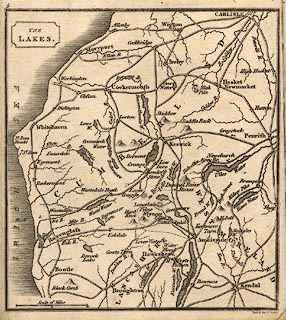 click to enlarge
click to enlargeGRA1Lk.jpg
"Black Comb"
hillock; mountain
item:- Hampshire Museums : FA2000.62.5
Image © see bottom of page
placename:- Blackcomb
 goto source
goto source"[Millom Castle] ... with an extensive park, beyond which rises Blackcomb mountain; whence in a clear day, may be distinctly seen seven English counties, and a great part of Scotland, Wales, and the Isle of Man. ..."
placename:- Black Comb
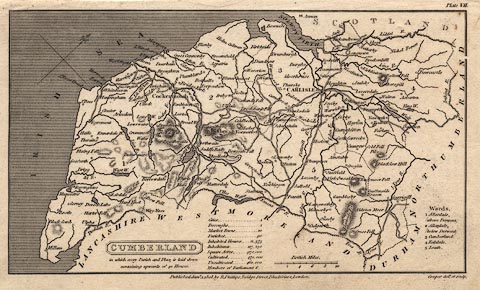 click to enlarge
click to enlargeCOP3.jpg
"Black Comb"
hill hachuring; mountain or hill
item:- JandMN : 86
Image © see bottom of page
placename:- Black Comb
item:- viewpoint; Minstrels of Windermere
 goto source
goto sourcepage x "... the solitary Mountain Black Comb, the summit of which, as that experienced surveyor, Colonel Mudge, declared, commands a more extensive view than any point in Britain. Ireland he saw more than once, but not when the sun was above the horizon."
""Close by the Sea, lone sentinel,
Black-Comb his forward station keeps;
He breaks the sea's tumultuous swell,-
And ponders o'er the level deeps."
"He listens to the bugle horn,
Where Eskdale's lovely valley bends;
Eyes Walney's early fields of corn;
Sea-birds to Holkers's woods he sends."
"Beneath his feet the sunk ship rests,
In Duddon Sands, its masts all bare:
... ... ... ... ... ...""
"The Minstrels of Windermere, by Chas. Farish, B.D."
"..."
placename:- Black Combe

OT02SD18.jpg
"BLACK COMBE"
item:- JandMN : 48.1
Image © see bottom of page
placename:- Black Combe
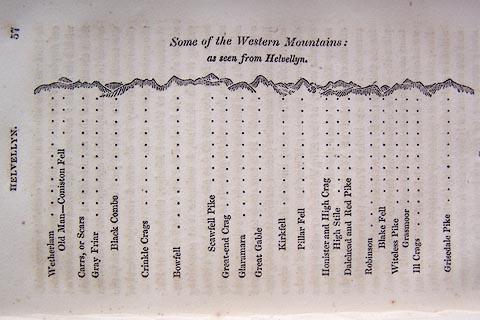 click to enlarge
click to enlargeO75E02.jpg
p.57 in A Concise Description of the English Lakes, by Jonathan Otley, 4th edition, 1830. "Some of the Western Mountains: / as seen from Helvellyn."
"Wetherlam / Old Man - Coniston Fell / Carrs, or Scars / Gray Friar / Black Combe / Crinkle Crags / Bowfell / Scawfell Pike / Great-end Crag / Glaramara / Great Gable / Kirkfell / Pillar Fell / Honister and High Crag / High Stile / Dalehead and Red Pike / Robinson / Blake Fell / Witeless Pike / Grasmoor / Ill Crags / Grisedale Pike"
item:- Armitt Library : A1175.3
Image © see bottom of page
placename:- Black Comb
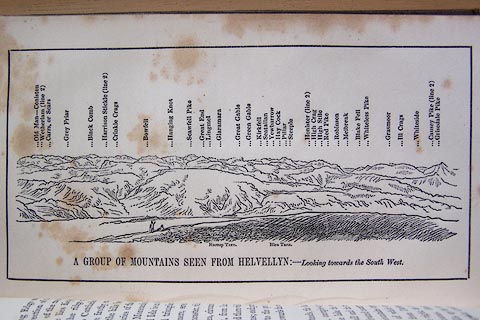 click to enlarge
click to enlargeO80E17.jpg
item:- Armitt Library : A1180.18
Image © see bottom of page
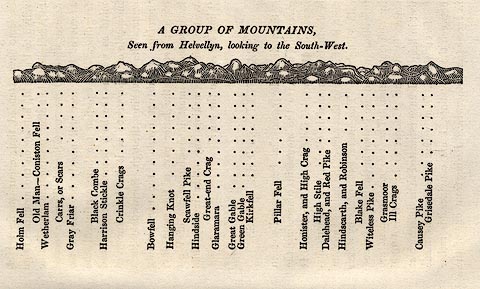 click to enlarge
click to enlargeOT2E09.jpg
Printed on p.63 of A Concise Description of the English Lakes, by Jonathan Otley, 5th edition, 1834. "A GROUP OF MOUNTAINS, Seen from Helvellyn, looking to the South-West."
"Holm Fell / Old Man - Coniston Fell / Wetherlam / Carrs, or Scars / Gray Friar / Black Combe / Harrison Stickle / Crinkle Crags / Bowfell / Hanging Knot / Scawfell Pike / Hindside / Great-end Crag / Glaramara / Great Gable / Green Gable / Kirkfell / Pillar Fell / Honister, and High Crag / High Stile / Dalehead, and Red Pike / Hindscarth, and Robinson / Blake Fell / Witeless Pike / Grasmoor / Ill Crags / Causey Pike / Grisedale Pike"
item:- JandMN : 48.10
Image © see bottom of page
placename:- Black Coom
item:- triangulation station; trig point; Mudge, Colonel; altitude, Black Combe; geology; peat; viewpoint; latitude; longitude; lat and long
 goto source
goto sourcePage 72:- "BLACK COMBE, OR COOM,"
"Stands near the southern boundary of Cumberland. Forming the extremity of the mountain chain, it may be seen at a great distance; and is a fine station both for land and sea prospects. In 1808, it was made one of Colonel Mudge's stations, in the process of the Trigonometrical Survey. He calculated its height to be 1919 feet above the level of the sea. Its substance is a rock of clay-slate similar to that of Skiddaw, covered by a large tract of peat earth, which is cut for fuel, and brought down on different sides of the mountain. By the misprint of a single figure in the longitude of this mountain in the 3rd vol. of the Trigonometrical Survey, a great distortion has been caused in some maps lately constructed upon that basis."
 goto source
goto sourcePage 78:- "STATION I.- SCAWFELL highest point, THE PIKES."
"Latitude 54° 27′ 24″ N. Longitude 3° 12′W. "
"..."
"Black Combe, Cumberland
BEARINGS 19 SW
Distances in miles 15
Height in feet 1919"
"..."
"STATION II.- SKIDDAW."
"Latitude 54° 39′ 12″ N. Longitude 3° 8′ 9″W. "
"..."
"Black Combe
BEARINGS 15 SW
Distances in miles 29
Height in feet 1919"
"..."
 goto source
goto sourcePage 79:- "STATION IV.- CONISTON OLD MAN."
"Latitude 54° 22′ 20″ N. Longitude 3° 6′ 34″W. "
"..."
"Black Combe
BEARINGS 46 SW
Distances in miles 12
Height in feet 1919"
"..."
 goto source
goto sourcePage 152:- "The greatest bulk of these mountain rocks have been commonly included under the general appellation of slate; although many of them shew no disposition to the slaty cleavage. They may be classed in three principal divisions."
"Of these divisions, the FIRST or lowest in the series, ... after being lost for several miles, it is elevated again at Black Combe."
"..."
placename:- Blackcomb
placename:- Blackcombe
placename:- Black Combe
item:- altitude, Black Combe
 goto source
goto source"... THE Lake district ... consists of large masses or clusters of mountains, generally terminating in one aspiring and pre-eminent point, with the intermediate valleys occupied either by lakes and their subsidiary tarns, or by winding rivers."
"The chief nuclei of these clusters are, Skiddaw and Blencathra, Helvellyn, Fairfield, Coniston Old Man, Blackcomb, Scafell, Gable, Red Pike, Grasmoor, Grisdale Pike, and the Langdale Pikes. Many noble and commanding mountains rise around these, rivalling them in height and grandeur, but still"
 goto source
goto sourcePage iv:- "serving as large buttresses only. In the presentation of endlessly-diversified forms, these Mountains yield to none, however individually inferior they may be, owing to their being seldom seen in a detached point of view; although, on the other hand, they have thus the advantage of forming combinations at once grand and sublime, towering above each other, or rising in ridges, like the mighty billows of the ocean."
 goto source
goto sourcePage 15:- "BLACKCOMBE,"
"Rightly so called from the gloomy heather on its surface, may be most eligibly ascended from this town, a very gentle ascent leading to its summit. The base being at the extremity of the mountain chain, on the sea-shore between Ravenglass and the estuary of the Duddon, the prospect is one of great variety. The sublime ocean forms one-half of the circumference, with Peel Castle and the Isle of Walney on the south; in the west, the Isle of Man is a conspicuous object; the fine indented coast, the bulwark of Cumberland, trends away to the north; the towns of Egremont and Ravenglass, Bootle and Broughton, give animation to the scene; the beauties of Duddon repose at the feet; and far in the east, a mighty assemblage of mountains rear their gigantic heads."
 goto source
goto sourcePage 178:- "ELEVATION OF THE MOUNTAINS,"
"ACCORDING TO DIFFERENT AUTHORITIES."
| No. | Names of Mountains. | Dalton. | Otley. | Trig. S. | Jamieson |
| 25 | Black Combe | 1919 |
placename:- Black Comb
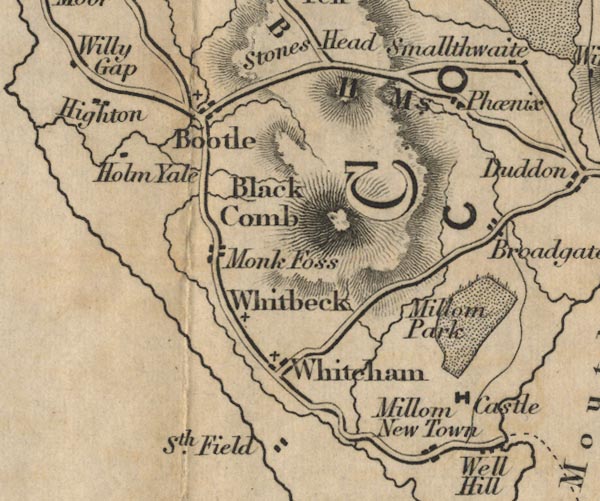
FD02SD18.jpg
"Black Comb"
Hill hachuring.
item:- JandMN : 100.1
Image © see bottom of page
placename:- Black Comb
coast views on Admiralty chart
 click to enlarge
click to enlargeHY01P2.jpg
"Black Comb"
 click to enlarge
click to enlargeHY01P3.jpg
"Black Comb ..."
 click to enlarge
click to enlargeHY01P4.jpg
"Black Comb Foot / Black Comb"
item:- Carlisle Library : Map 93
Images © Carlisle Library
placename:- Black Comb
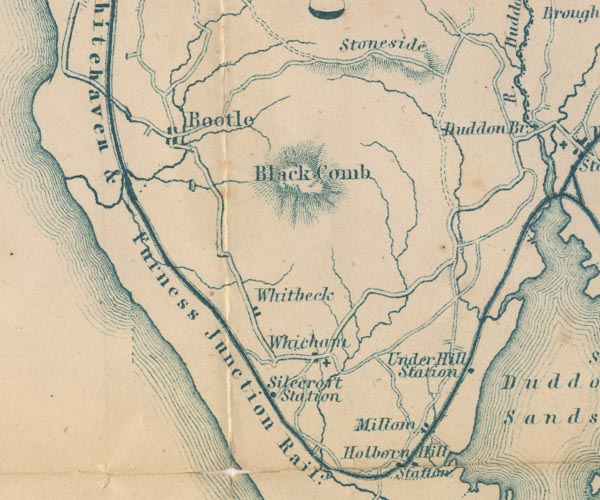
GAR2SD18.jpg
"Black Comb"
hill hachuring
item:- JandMN : 82.1
Image © see bottom of page
placename:- Blackcombe
 goto source
goto sourcePage 57:- "... What mountain shall it be? He might go up Blackcombe, on his way to or from Furness: and from thence he might see, in fair weather, as Wordsworth tells us, "a more extensive view than from any other point in Britain," - seven English counties, and seven"
 goto source
goto sourcePage 58:- "Scotch, a good deal of Wales, the Isle of Man, and in some lucky moment, just before sunrise (as the Ordnance surveyors say) the coast of Ireland. This is very fine; but it is hardly what is looked for in the lake district,- the sea being the main feature. ..."
"..."
 goto source
goto sourcePage 107:- "... Tourists who desire to ascend Blackcombe, should do it from hence [Broughton in Furness],- the summit being only six miles from Broughton; and guides are here to be procured. Wordsworth says of this mountain that "its base covers a much greater extent of ground than any other mountain in those parts; and, from its situation, the summit commands a more extensive view than any other point in Britain." One would think that this testimony, and Col. Mudge's information that, when residing on Blackcombe for surveying purposes, he more than once saw Ireland before sunrise, would bring strangers to try their luck in seeing Scotland, Staffordshire, and Ireland, from the same point: but the mountain lies out of the ordinary track of tourists, and very few visit it."
item:- altitude, Black Combe
 goto source
goto sourcePage 179:- "A TABLE OF THE HEIGHTS OF MOUNTAINS IN THE COUNTIES OF CUMBERLAND, WESTMORLAND, AND LANCASHIRE."
"No. : Names of Mountains. : Counties. : Height in Feet above the Sea Level."
"21 : Black Combe : Cumberland : 1919"
placename:- Black Comb
placename:- Blackcomb
"BLACK COMB, 1841, is a large rocky hill in the parish of Whitbeck, in the county of Cumberland. The station is on top of the hill, and is marked by a pile of stones 14.5 feet high and 50 feet in circumference, erected above a centre stone with a hole in it 4 inches deep and an inch in diameter. The station was restored in 1852."
"BLACK COMB 2-ft. Theodolite From 31st August to 29th October 1841. Observer: Lieut. DA COSTA, R.E."
Objects / Bearings in degrees, minutes and decimal seconds. "Snowdon / 20 46 45.34"
"South Berule / 82 42 22.61"
"Snea Fell / 90 56 40.86"
"North Berule / 93 24 58.62"
"Cairnsmuir of Fleet / 141 4 37.06"
"Merrick / 143 38 30.78"
"Ben Cairn / 151 3 28.87"
"Cairnsmuir on Deugh / 153 14 10.25"
"Dent Hill / 159 23 6.89"
"Criffel / 165 49 5.89"
"Sca Fell / 199 9 18.04"
"Little Whernside / 272 47 13.12"
"Ingleboro' / 279 7 41.59"
"Pendle Hill / 302 [17] 49.00"
"Whittle Hill / 312 54 35.48"
"Beryl / 337 54 38.61"
Altitude above mean sea level:- "1974.3 feet"
Position, latitude and longitude, degrees minutes decimal seconds "54 15 27.52 / 3 19 37.06"
placename:- Black Combe
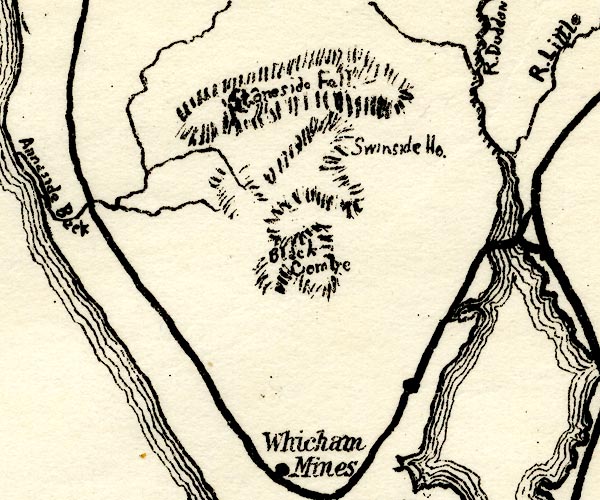
PST2SD18.jpg
"Black Combe"
hill hachuring
item:- JandMN : 162.2
Image © see bottom of page
placename:- Black Combe
 goto source
goto sourcePage 384:- "... Black Combe, a dark-coloured hill which rises to an elevation of 1,956 feet (596m2) at two miles inland midway between Haverigg and Tarn points, forms a useful mark; it has an unbroken rounded outline, and the hills of Lockna banks, partly cultivated, lie a short distance southward of it, the whole being terminated seaward by a line of reddish cliff and braes. Black Combe is succeeded by high land in a northerly direction, with a well-cultivate foreground."
placename:- Black Combe
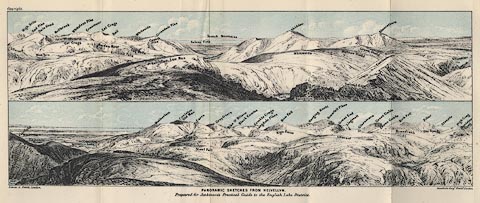 click to enlarge
click to enlargeJk01E1.jpg
"... Black Combe ..."
item:- JandMN : 28.5
Image © see bottom of page
placename:- Black Combe
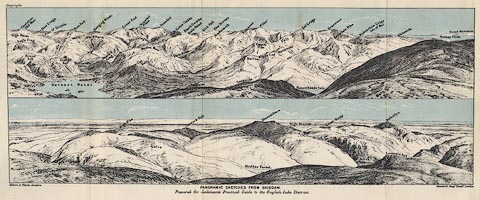 click to enlarge
click to enlargeJk01E2.jpg
"... Black Combe ..."
item:- JandMN : 28.8
Image © see bottom of page
placename:- Black Combe
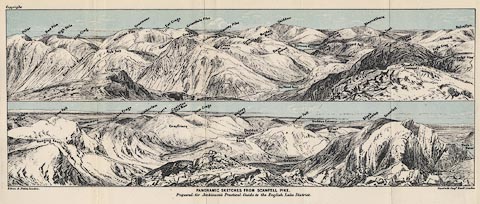 click to enlarge
click to enlargeJk01E3.jpg
"... Black Combe ..."
item:- JandMN : 28.9
Image © see bottom of page
placename:- Black Combe Mountain
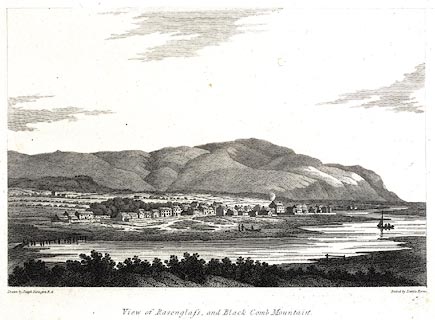 click to enlarge
click to enlargePR0564.jpg
printed at bottom left, right, centre:- "Drawn by Joseph Farington R.A. / Etchedby Letitia Byrne. / View of Ravenglass, and Black Comb Mountain. / Published Septr. 20, 1815, by T. cadell &W. Davies Strand."
item:- Dove Cottage : 2008.107.512
Image © see bottom of page
placename:- Black Comb
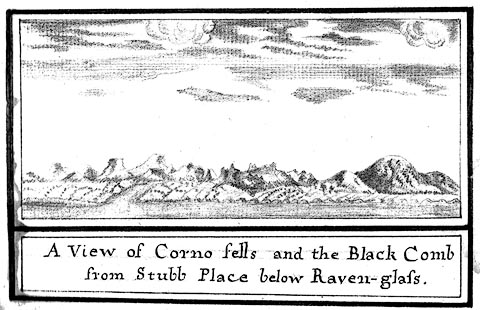 click to enlarge
click to enlargeSM2101.jpg
ms at bottom:- "A View of Corno fells and the Black Comb / from Stubb Place below Raven-glass."
item:- Carlisle Library : 5.1
Image © Carlisle Library

Click to enlarge
BND39.jpg From the road above Rigg Well on the side of Great Burney.
(taken 2.2.2007)
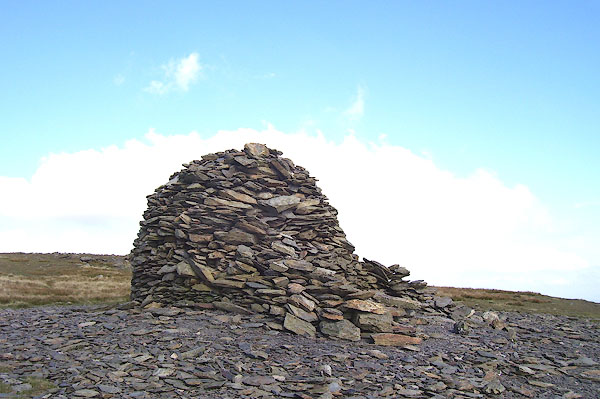
BOF70.jpg Cairn, or shelter, on the southerly summit.
(taken 2.2.2007)
